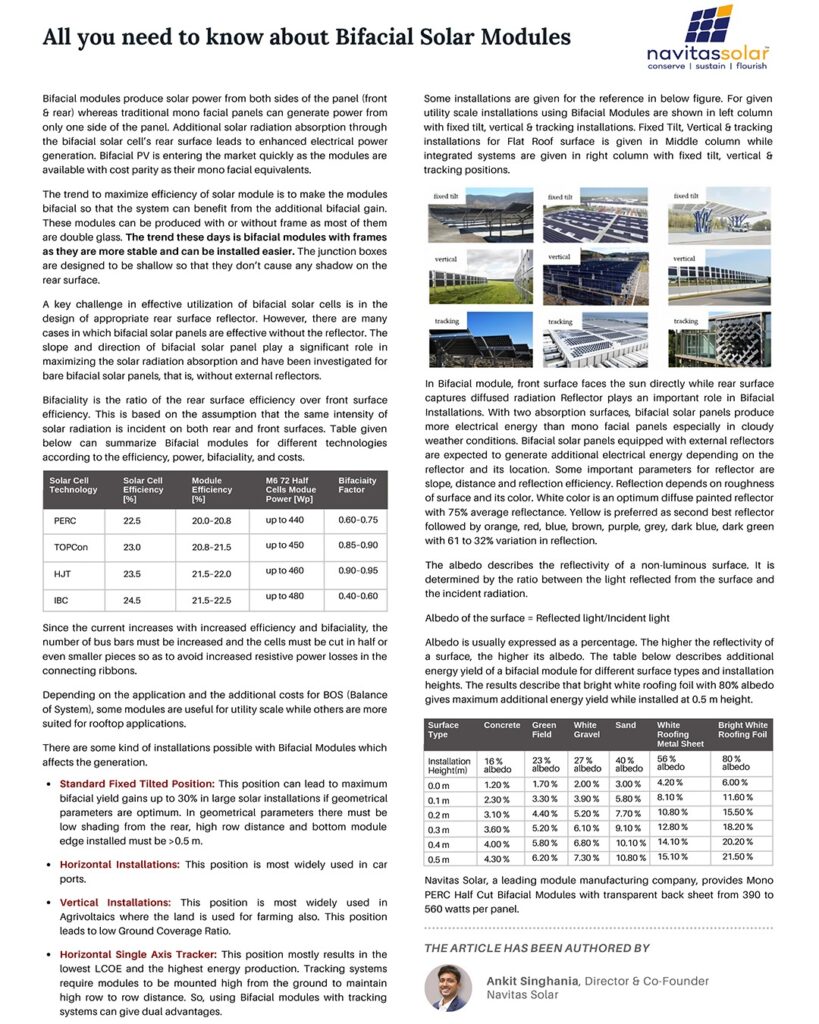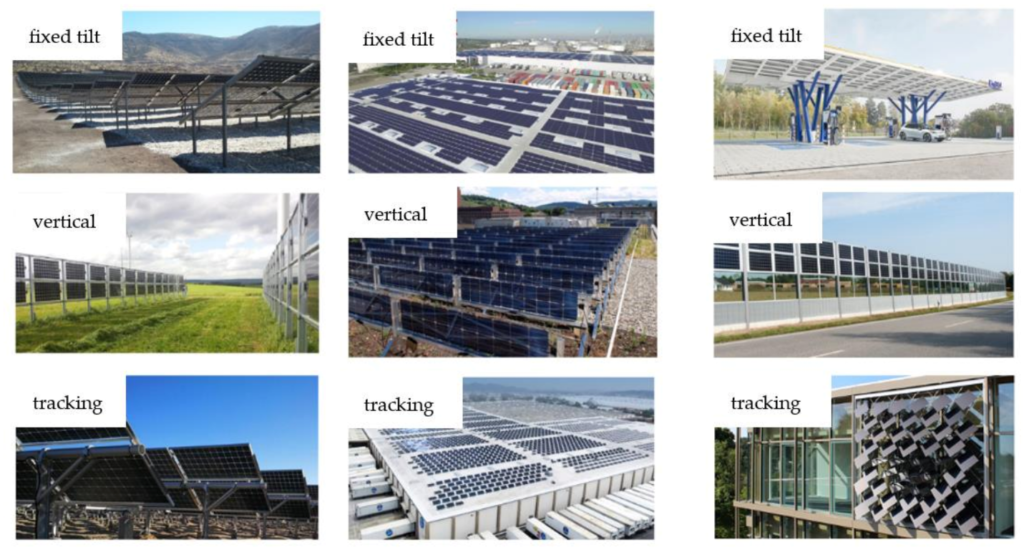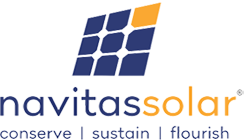Navitas Solar Shares Idea on Bifacial Solar Panels Installations

All you need to know about Bifacial Solar Modules
Bifacial modules produce solar power from both sides of the panel (front & rear) whereas traditional mono facial panels can generate power from only one side of the panel. Additional solar radiation absorption through the bifacial solar cell’s rear surface leads to enhanced electrical power generation. Bifacial PV is entering the market quickly as the modules are available with cost parity as their mono facial equivalents.
The trend to maximize efficiency of solar module is to make the modules bifacial so that the system can benefit from the additional bifacial gain. These modules can be produced with or without frame as most of them are double glass. The trend these days is bifacial modules with frames as they are more stable and can be installed easier. The junction boxes are designed to be shallow so that they don’t cause any shadow on the rear surface.
A key challenge in effective utilization of bifacial solar cells is in the design of appropriate rear surface reflector. However, there are many cases in which bifacial solar panels are effective without the reflector. The slope and direction of bifacial solar panel play a significant role in maximizing the solar radiation absorption and have been investigated for bare bifacial solar panels, that is, without external reflectors.
Bifaciality is the ratio of the rear surface efficiency over front surface efficiency. This is based on the assumption that the same intensity of solar radiation is incident on both rear and front surfaces. Table given below can summarize Bifacial modules for different technologies according to the efficiency, power, bifaciality, and costs.
| Solar Cell Technology | Solar Cell Efficiency[%] | Module Efficiency[%] | M6 72 Half Cells Modue Power [Wp] | Bifaciaity Factor |
|---|---|---|---|---|
| PERC | 22.5 | 20.0–20.8 | up to 440 | 0.60–0.75 |
| TOPCon | 23.0 | 20.8–21.5 | up to 450 | 0.85–0.90 |
| HJT | 23.5 | 21.5–22.0 | up to 460 | 0.90–0.95 |
| IBC | 24.5 | 21.5–22.5 | up to 480 | 0.40–0.60 |
Since the current increases with increased efficiency and bifaciality, the number of bus bars must be increased and the cells must be cut in half or even smaller pieces so as to avoid increased resistive power losses in the connecting ribbons.
Depending on the application and the additional costs for BOS (Balance of System), some modules are useful for utility scale while others are more suited for rooftop applications.
There are some kind of installations possible with Bifacial Modules which affects the generation.
- Standard Fixed Tilted Position: This position can lead to maximum bifacial yield gains up to 30% in large solar installations if geometrical parameters are optimum. In geometrical parameters there must be low shading from the rear, high row distance and bottom module edge installed must be >0.5 m.
- Horizontal Installations: This position is most widely used in car ports.
- Vertical Installations: This position is most widely used in Agrivoltaics where the land is used for farming also. This position leads to low Ground Coverage Ratio.
- Horizontal Single Axis Tracker: This position mostly results in the lowest LCOE and the highest energy production. Tracking systems require modules to be mounted high from the ground to maintain high row to row distance. So, using Bifacial modules with tracking systems can give dual advantages.
Some installations are given for the reference in below figure. For given utility scale installations using Bifacial Modules are shown in left column with fixed tilt, vertical & tracking installations. Fixed Tilt, Vertical & tracking installations for Flat Roof surface is given in Middle column while integrated systems are given in right column with fixed tilt, vertical & tracking positions.

In Bifacial module, front surface faces the sun directly while rear surface captures diffused radiation Reflector plays an important role in Bifacial Installations. With two absorption surfaces, bifacial solar panels produce more electrical energy than mono facial panels especially in cloudy weather conditions. Bifacial solar panels equipped with external reflectors are expected to generate additional electrical energy depending on the reflector and its location. Some important parameters for reflector are slope, distance and reflection efficiency. Reflection depends on roughness of surface and its color. White color is an optimum diffuse painted reflector with 75% average reflectance. Yellow is preferred as second best reflector followed by orange, red, blue, brown, purple, grey, dark blue, dark green with 61 to 32% variation in reflection.
The albedo describes the reflectivity of a non-luminous surface. It is determined by the ratio between the light reflected from the surface and the incident radiation.
Albedo of the surface = Reflected light/Incident light
Albedo is usually expressed as a percentage. The higher the reflectivity of a surface, the higher its albedo. The table below describes additional energy yield of a bifacial module for different surface types and installation heights. The results describe that bright white roofing foil with 80% albedo gives maximum additional energy yield while installed at 0.5 m height.
| Surface Type | Concrete | Green Field | White Gravel | Sand | White Roofing Metal Sheet | Bright White Roofing Foil |
|---|---|---|---|---|---|---|
| Installation Height(m) | 16% albedo | 23% albedo | 27% albedo | 40% albedo | 56% albedo | 80% albedo |
| 0.0 m | 1.20 % | 1.70 % | 2.00 % | 3.00 % | 4.20 % | 6.00 % |
| 0.1 m | 2.30 % | 3.30 % | 3.90 % | 5.80 % | 8.10 % | 11.60 % |
| 0.2 m | 3.10 % | 4.40 % | 5.20 % | 7.70 % | 10.80 % | 15.50 % |
| 0.3 m | 3.60 % | 5.20 % | 6.10 % | 9.10 % | 12.80 % | 18.20 % |
| 0.4 m | 4.00 % | 5.80 % | 6.80 % | 10.10 % | 14.10 % | 20.20 % |
| 0.5 m | 4.30 % | 6.20 % | 7.30 % | 10.80 % | 15.10 % | 21.50 % |
Navitas Solar, a leading module manufacturing company, provides Mono PERC Half Cut Bifacial Modules with transparent back sheet from 390 to 560 watts per panel.


 Online | Privacy policy
Online | Privacy policy
Related Posts
You May Also Like
Bonito Series: Driving Innovation in…
Read MoreTOPCon Series: The Next Generation…
Read MoreValuable Points to Remember During…
Read MoreNavitas Planet Partners with Hysolwin…
Read MoreDriving Towards a Sustainable Future:…
Read MoreWhy Do Top-Grade EVA Sheets…
Read MoreBonito Series: Driving Innovation in…
Read MoreTOPCon Series: The Next Generation…
Read MoreValuable Points to Remember During…
Read MoreNavitas Planet Partners with Hysolwin…
Read MoreDriving Towards a Sustainable Future:…
Read MoreWhy Do Top-Grade EVA Sheets…
Read MoreBonito Series: Driving Innovation in…
Read MoreTOPCon Series: The Next Generation…
Read MoreValuable Points to Remember During…
Read MoreNavitas Planet Partners with Hysolwin…
Read More